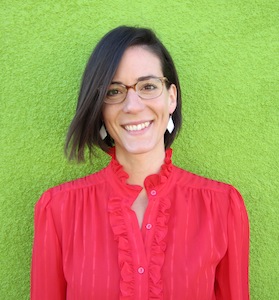My teaching philosophy centers on the concept of deep learning and the development of the sociological imagination through active engagement. My primary goal is to help students reach insights, rooted in their own positionality, developing more nuanced comprehension of structural realities of the social world and how people interact with them. Understanding social problems is essential for the sociologist; my students study the practices and ideologies that support and sustain inequalities. I also stress the importance of good research in building knowledge and drawing conclusions.
Because I want my students to achieve deep learning (resonant, memorable, and meaningful knowledge), I expose them to sociological material in multiple ways. Deep learning is pursued through engaging the whole person, from their emotions and identity to their intellect. In small classes, I use a multitude of techniques to give students access to the content such that it has the potential to be the most meaningful: structured group activities and discussion, presentation of content via various modes (e.g., graphics/visuals, film/video, music, case studies), formative assessment via frequent homework, short lectures to clarify misconceptions and emphasize main ideas, and reflective writing.
In larger classes, I lecture more, but frequently mix it up by including demonstrations, video clips, comprehension and polling questions via i>clickers, quick pair-and-share discussions, and selected activities. For example, large sections of Introduction to Sociology (I’ve taught classes of from 90-220 students), we did an activity on the campus grounds where we disrupted social norms by standing still (modified from Nate Palmer, Georgia Southern University). From just 15 minutes of collectively “doing nothing,” observing the reactions of passersby, and then returning to the classroom for discussion, students were able to grasp 1) that social norms create stability and expectations and 2) how social science produces knowledge of the meanings attached to social norms.
My teaching has evolved through participation in umpteen teaching workshops, lots of trial & error, and extensive self-reflection. I welcome the challenge (and risk) involved in trying out, assessing, and modifying new strategies. For example, although it was a difficult transition with many headaches, I implemented i>clickers into my large classes and ultimately found that they improved academic behaviors (e.g., attendance, completion of readings), and enabled me to increase the rigor of exams and have student grades remain stable. I am a proponent of soliciting mid-semester feedback on the course from students, which has two positive effects: I make adjustments that improve the class, and students know that I value their perspective and care more for their learning than my ego.
I receive consistently high marks in student and departmental teaching evaluations and have a record of striving for excellence and teaching innovation. In course evaluations, many students comment on my enthusiasm, organization, engaging and memorable activities and lectures, and concern for student success. In my first year at Montana State (and first time teaching large classes), a student nominated me for the MSU Teaching Innovation Award, writing that my Introduction to Sociology class was “by far the most interactive and interesting core class I took. She was able to find ways to keep an auditorium interested!” At the University of Wisconsin-Whitewater, I was nominated for the CARE (Concern for Adults Returning to Education) Award.
